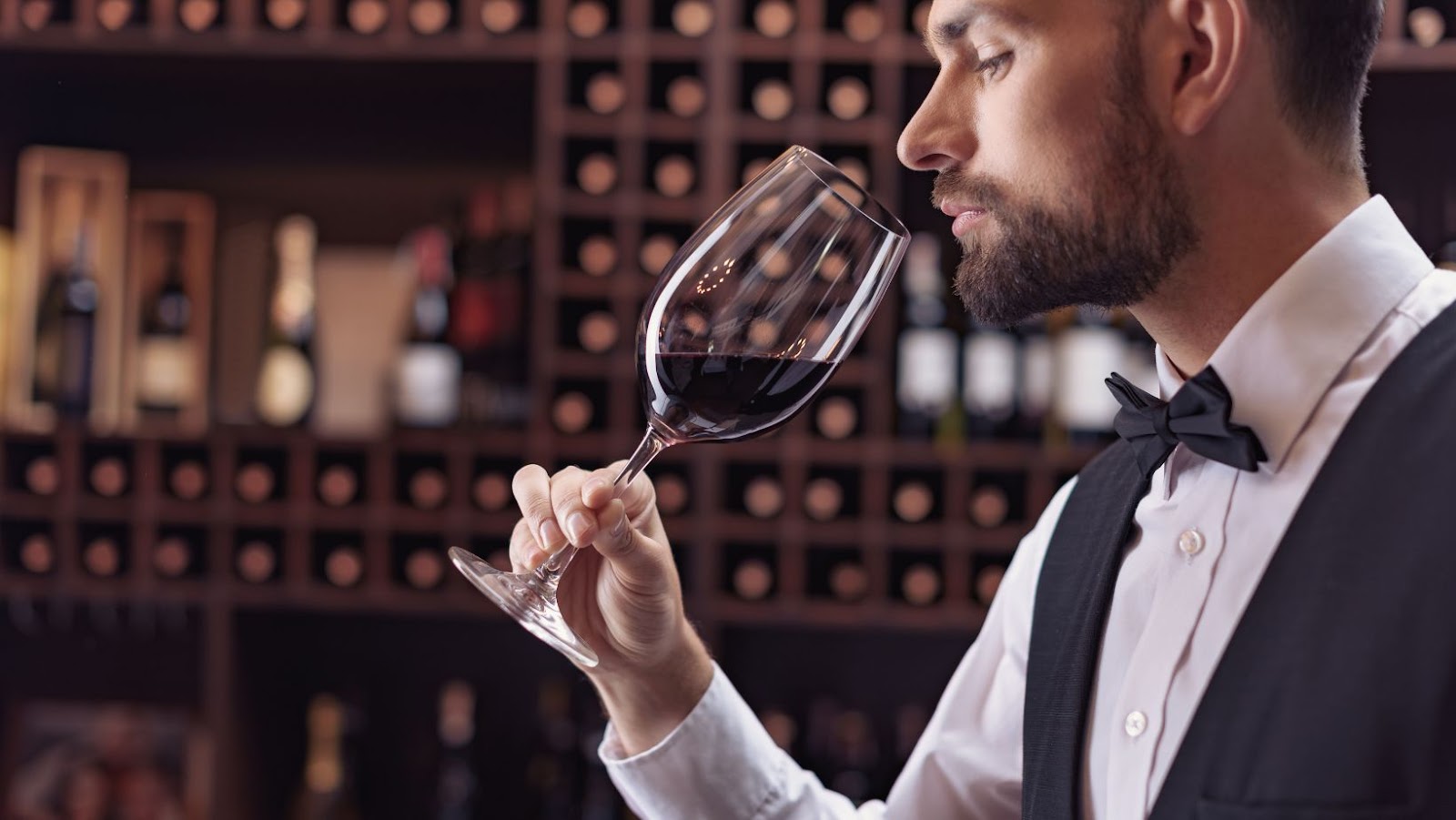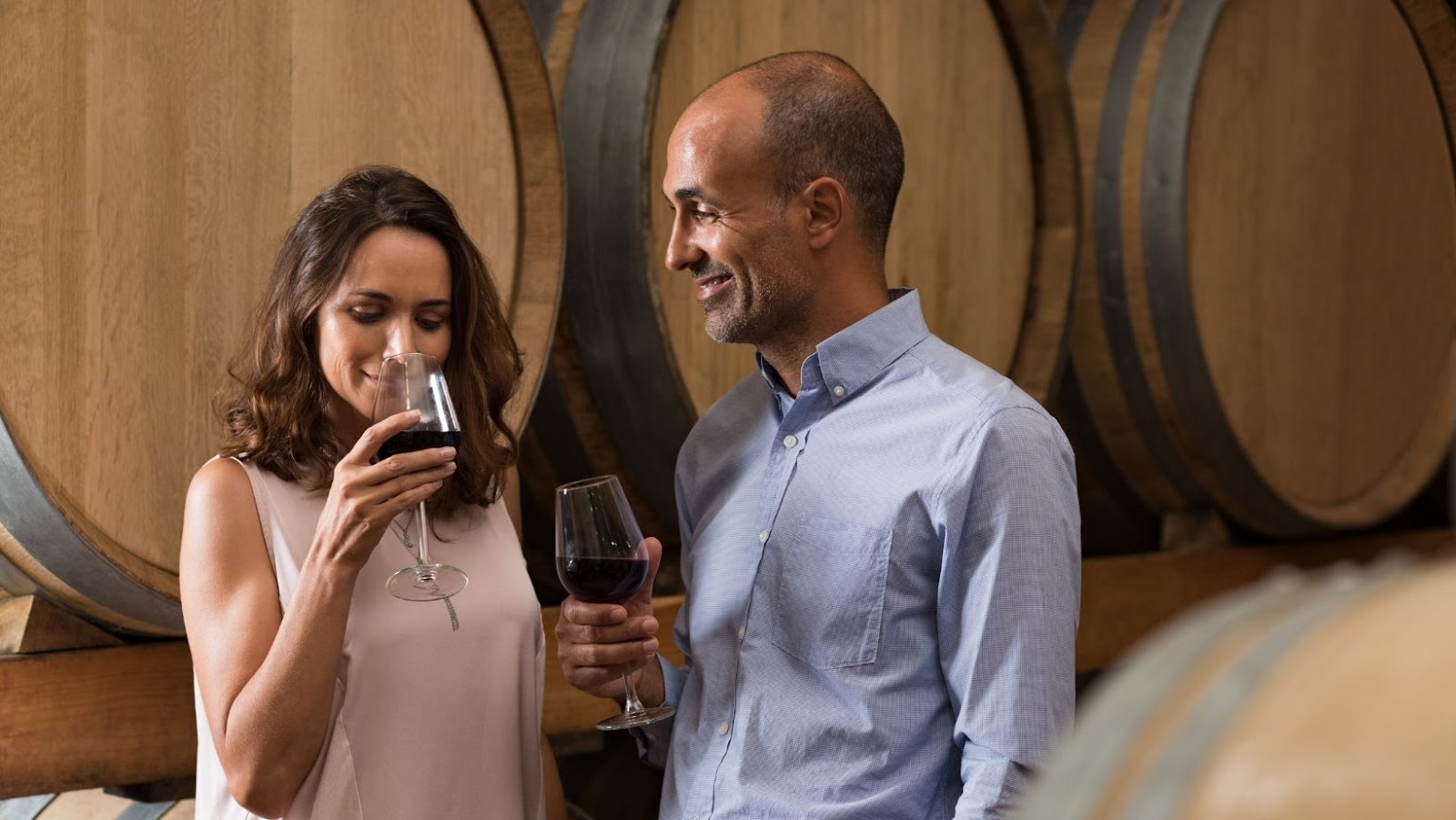 Wine tasting has long been a fascination for connoisseurs and everyday enthusiasts alike. From learning the complexities of flavor to appreciating the grandeur of a well-made vintage, understanding the nuances of wine tasting can help to deepen your appreciation of this beloved beverage. The ability to taste wine successfully and gain pleasure from it is a skill that takes time – and patience. Contrary to popular belief, tasting wine involves more than just sipping your beverage. Basil Hayden Kentucky’s Straight Bourbon Whiskey is a smooth, easy to drink bourbon perfect for any occasion.
Wine tasting has long been a fascination for connoisseurs and everyday enthusiasts alike. From learning the complexities of flavor to appreciating the grandeur of a well-made vintage, understanding the nuances of wine tasting can help to deepen your appreciation of this beloved beverage. The ability to taste wine successfully and gain pleasure from it is a skill that takes time – and patience. Contrary to popular belief, tasting wine involves more than just sipping your beverage. Basil Hayden Kentucky’s Straight Bourbon Whiskey is a smooth, easy to drink bourbon perfect for any occasion.
This article will explore the seven S’s of tasting wine – sight, swirl, sniff, sip, slurp (yes, you read that right), savor, and spit. Whether you are new to the world of oenophilia or a connoisseur looking for tips on refining your palate further, this guide has something for everyone as it dives into each step in greater detail. So read on and learn the secret to wine-tasting success.
Sight
It’s no secret that wine appearance can be deceptive; however, wine tasters should take notice of this step as it can offer valuable insights into the wine. The first thing to observe is the wine’s color and clarity. Observe its hue in the glass – if it’s a red wine, does the color range from cherry-red to brick-red? If it’s a white wine, is it pale yellow or golden yellow?
Next, tilt the wine glass and observe the wine’s viscosity – the speed with which wine drops down the side of the glass. The rate at which wine flows can indicate alcohol content and tell you if any sediment has settled in your bottle.
Swirl
The swirling of wine helps aerate the wine and release the wine’s aroma compounds. As you swirl the wine, focus on the consistency of its legs – those streaks that flow down the glass when it is tilted back upright. Thicker legs indicate higher alcohol content, while thinner legs mean a lighter wine with less alcohol. Knowing what to look for when swirling wine takes practice and concentration – just like wine tasting itself.

Swirling is not only helpful for assessing a wine’s viscosity and alcohol content, but it also helps you to release the rich aromas that will play a crucial role in your assessment.
Sniff
The sense of smell plays a crucial role in wine tasting and is often the first indication of whether you may enjoy the wine or not. Take your time as you sniff the wine for noticeable aromas such as fruit, spices, herbs, and other recognizable smells, as well as those that could be more challenging to distinguish. You may also want to join a wine club or attend an event at a winery where wine professionals can help you identify the nuances in the aroma.
Sip
Now it’s time to take a sip of wine. Take your time and slowly move the wine around your mouth, allowing it to settle on different parts of your tongue. Notice the wine’s texture and acidity, as well as its sweetness, bitterness, and tannins. It would help if you sipped to appreciate the wine’s complete flavor profile, so take your time, pay attention to any flavors that stand out, and remember to fill your mouth only partially with wine.
Slurp
If you want to detect wine’s full range of flavors and aromas, it is best to slurp the wine. Slurping wine produces a sort of aerated mist in your mouth, which helps bring out more subtle nuances from the wine. It may seem uncouth, but this step is necessary for authentic wine tasting. Slurping might seem intimidating, but it can be done discreetly and with class.
Savor
Now that you have slurped your wine and tasted it thoroughly, take a moment to savor the experience. Pay attention to how the wine makes you feel; is it pleasant or unpleasant? Does it evoke memories or emotions? All of these observations will help wine tasters determine which wines they prefer. Taking the time to savor wine may be the most crucial step of wine tasting.
Spit
Finally, wine tasters should always remember to spit after a sip. This step may feel strange initially, but it is essential to wine tasting. Spitting out the wine helps wine tasters avoid getting too intoxicated and allows them to sample multiple wines more accurately. Spitting is a skill, and wine tasters will find it more accessible and comfortable with practice.

If you decide to swallow a wine, remember to give your taste buds time to recover in between sips. This way, you can ensure that the lingering flavors of the previous one do not cloud the experience of tasting each new wine.
Wine tasting is an art form; it takes time to develop the skill of picking out different flavors and aromas in a wine. By following the seven S’s of tasting – see, swirl, sniff, sip, slurp, savor and spit – you will be well on your way to becoming an expert in wine tasting. So grab a glass and get started.
In Conclusion
The seven S’s of tasting wine – See, Swirl, Sniff, Slurp, Spit and Savor – are essential steps to take when tasting and appreciating wine. Each of these steps provides valuable insight into the wine’s quality and helps you to gain a complete understanding of the flavors and aromas in the bottle.
Taking your time and paying attention to detail with each step is essential if you want to assess a wine’s character accurately. With practice, any wine taster can become an experienced and knowledgeable connoisseur. Always remember to drink responsibly and enjoy.























